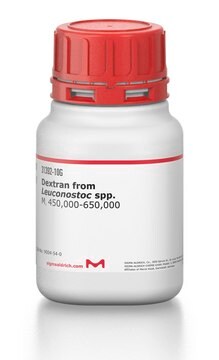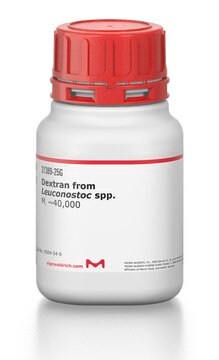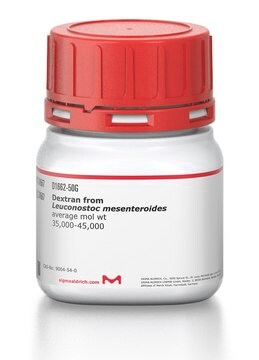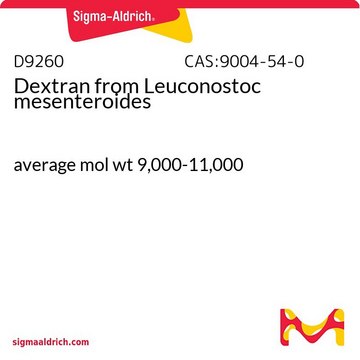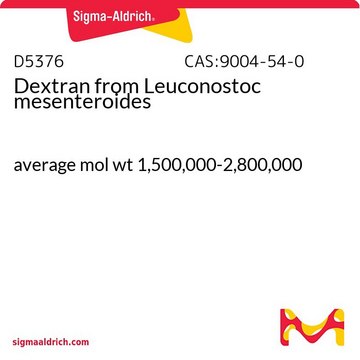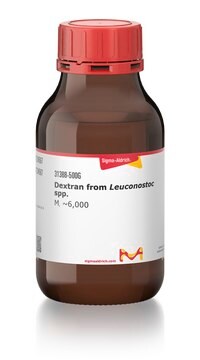D8821
Dextran from Leuconostoc mesenteroides
average mol wt 60,000-76,000
About This Item
Polecane produkty
pochodzenie biologiczne
bacterial (Leuconostoc mesenteroides)
Formularz
powder
aktywność optyczna
[α]20/D 190 to 201 °, c = 2% (w/v) in water
masa cząsteczkowa
average mol wt 60,000-76,000
kolor
white to off-white
mp
483 °C ((901 °F ))
rozpuszczalność
water: 100 mg/mL at 25 °C, colorless to faintly yellow
temp. przechowywania
2-8°C
ciąg SMILES
O1C(C(C(C(C1CO)O)O)O)OCC2OC(C(C(C2O)O)O)OCC(O)C(O)C(O)C(O)C=O
InChI
1S/C18H32O16/c19-1-5(21)9(23)10(24)6(22)3-31-17-16(30)14(28)12(26)8(34-17)4-32-18-15(29)13(27)11(25)7(2-20)33-18/h1,5-18,20-30H,2-4H2
Klucz InChI
FZWBNHMXJMCXLU-UHFFFAOYSA-N
Szukasz podobnych produktów? Odwiedź Przewodnik dotyczący porównywania produktów
Opis ogólny
Zastosowanie
- in resuspension of pellets and in Hanks′ balanced salt solution (HBSS) for the isolation of vascular nuclei from frozen post-mortem brain tissue
- to prepare dextran solution in phosphate buffer saline and to maintain corneal hydration and restore corneal thickness to physiological levels of human eyes
- as a polymer solution in the in situ aqueous two-phase systems (ATPS) formation with lysozyme PEGylation reaction
Działania biochem./fizjol.
Inne uwagi
Kod klasy składowania
11 - Combustible Solids
Klasa zagrożenia wodnego (WGK)
WGK 2
Wybierz jedną z najnowszych wersji:
Masz już ten produkt?
Dokumenty związane z niedawno zakupionymi produktami zostały zamieszczone w Bibliotece dokumentów.
Klienci oglądali również te produkty
Nasz zespół naukowców ma doświadczenie we wszystkich obszarach badań, w tym w naukach przyrodniczych, materiałoznawstwie, syntezie chemicznej, chromatografii, analityce i wielu innych dziedzinach.
Skontaktuj się z zespołem ds. pomocy technicznej
